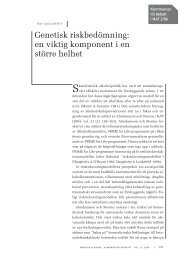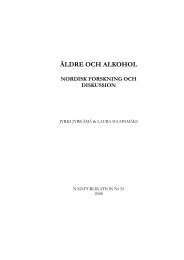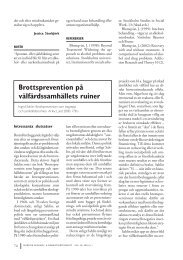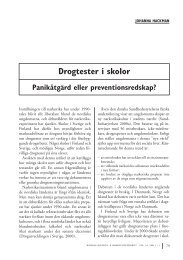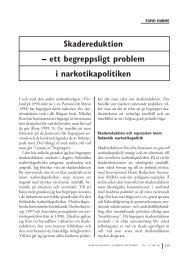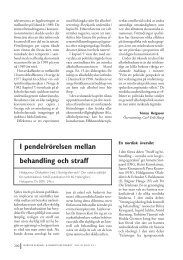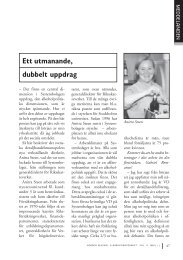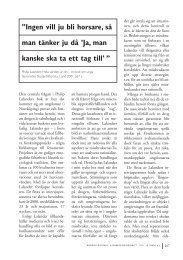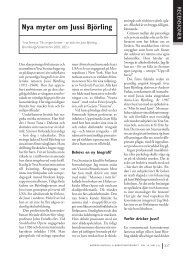CONGENITAL RUBELLA SYNDROME
CONGENITAL RUBELLA SYNDROME
CONGENITAL RUBELLA SYNDROME
You also want an ePaper? Increase the reach of your titles
YUMPU automatically turns print PDFs into web optimized ePapers that Google loves.
joint activities and social interaction (Karpov & Haywood, 1998). It appears that<br />
being sensitive to the needs of the child, recognising these and relieving them<br />
encourages a balanced regulation between the adult and the child (van Dijk, 2000).<br />
Persons with congenital deafblindness are at a high risk of experiencing stress. An<br />
individual who detects a discrepancy between his or her personal and<br />
environmental resources and the amount of adaptation required perceives a life<br />
event as stressful. We can assume that the sensory impairments and the reduced<br />
ability to self-regulation make it more obvious for the deafblind person with CRS<br />
to focus on internal stimuli rather than external stimulation from the surrounding<br />
world. This can easily lead to the development of self-stimulation and<br />
stereotyping. Inflexibility in response results in preservative, stereotyped,<br />
nonadaptive behaviour and difficulties in regulating and modulating motor acts.<br />
Persons who are incapable of suppressing emotional response tendencies may<br />
show strong emotional behaviour, which we normally consider as inappropriate.<br />
Furthermore, such maladaptive behaviours create considerable tension in parents<br />
and caregivers, and frequently lead to the person being placed in a very restrictive<br />
environment. It is important to understand these maladaptive behaviours and<br />
emotional reactions in the light of the existing knowledge about neurological<br />
processing (Jacobsen, 1998). We can observe that all people, and particularly<br />
deafblind individuals, will succumb to stress when the underlying systems are<br />
malfunctioning (van Dijk, 2000). Efforts to enhance the deafblind individual's<br />
coping capacity, including interpersonal relationships and communication, may<br />
lead to effective problem solving with moderation of the effects of the stressor.<br />
Deafblind persons with CRS, who exhibit self-stimulation and self-injurious<br />
behaviour, will have problems in perceiving new experiences. Therefore, these<br />
behaviours could have a considerably restraining effect on the development of the<br />
person in question. Many of the challenging behaviours observed in deafblind<br />
children are caused by inadequate adaptation to the child's possibilities and needs<br />
(van Dijk, 2000). It is also argued that one of the main reasons that the regulation<br />
between the deafblind person and the educator fails is because of the difficulty in<br />
recognising the signals which the deafblind person sends. Deafblind individuals<br />
are able to be equal partners in the co-construction of meaning in symmetric and<br />
reciprocal relationships (Nafstad and Rødbroe, 1999).<br />
The understanding of the connection between behavioural disturbances and<br />
relationship disturbances and the disturbances of the co-regulation of emotional<br />
interaction is emphasised by Sameroff & Emde (1989). Initially, we must try to<br />
reduce the self-stimulation by providing the deafblind person with experiences of<br />
essential coherence, mutual understanding and relationships for the co-creation of<br />
meaning within shared structures. These shared structures will also function as<br />
favourable frameworks for social interaction and communication. It is exactly in<br />
well-functioning social interactions that communicative expressions develop<br />
(Rødbroe, 1998). This will offer greater opportunities for mutual expectations,<br />
19



